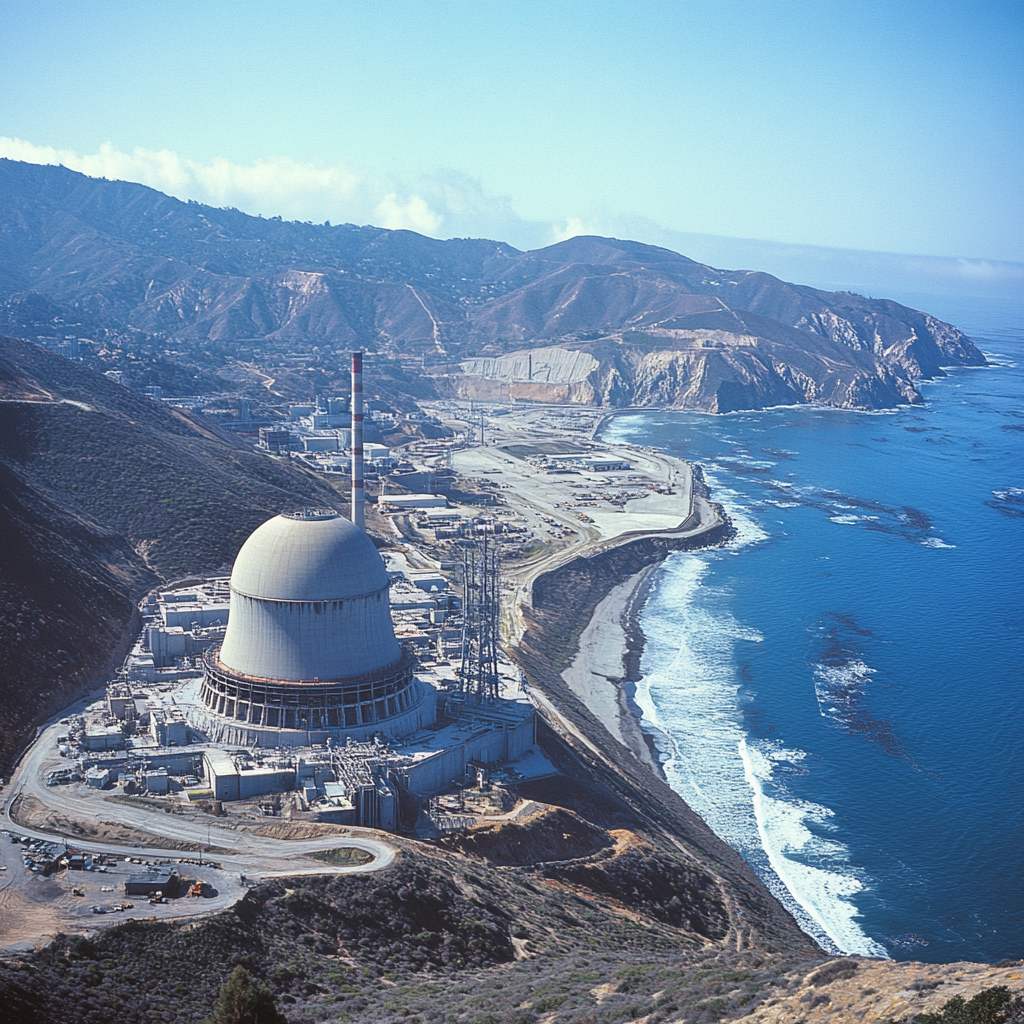
- Uranium’s Critical Status & Market Surge – The Trump administration is considering reclassifying uranium as a critical mineral, potentially unlocking federal support, while uranium prices remain strong despite fluctuations.
- Geopolitical & Domestic Supply Challenges – The U.S. relies heavily on foreign uranium sources, with domestic production down 96% over the past 25 years, prompting efforts to revive mining operations in Wyoming, Utah, Texas, and Arizona.
- Innovation & SMR Development – Advancements in small modular reactors (SMRs) and floating nuclear plants are driving industry growth, with significant investments in nuclear projects across the U.S. and Canada.
Nuclear energy is experiencing a resurgence, buoyed by a rising uranium spot price and potential policy shifts under the Trump administration. This revival marks a stark contrast to the stagnation that followed the 2011 Fukushima disaster. A key development in this shift is the push to reclassify uranium as a critical mineral, a move that could unlock federal funding and streamline permitting for domestic uranium projects. The U.S. Geological Survey (USGS) had removed uranium from its critical minerals list in 2022, classifying it instead as a fuel mineral. However, a recent executive order from the Trump administration directs the Secretary of the Interior to reconsider this decision, potentially reinstating uranium’s critical status and providing a boost to the sector.
The uranium market has already shown signs of strength, with the price of uranium oxide (U3O8) peaking at $106 per pound early last year before settling at $71 per pound—still significantly higher than in the post-Fukushima years. This pricing stability has encouraged companies such as Energy Fuels, Uranium Energy, and Cameco to ramp up their activities. Interest in nuclear power has been further fueled by the global push for zero-emissions energy and the increasing electricity demands of artificial intelligence infrastructure.
While this surge in demand signals an optimistic outlook, it also raises tensions within the broader geopolitical landscape. Trump’s “America First” agenda prioritizes domestic resource procurement, yet the reality of uranium sourcing tells a different story. U.S. uranium production has plummeted by 96% over the past 25 years, dropping from 4.8 million pounds in 2014 to just over 121,000 pounds in the third quarter of last year. Despite efforts to revive domestic production, the United States remains highly dependent on foreign suppliers. In 2022, 27% of its uranium purchases came from Canada, while another 57% originated from Kazakhstan, Uzbekistan, Australia, and Russia. The Biden administration sought to reduce reliance on Russian uranium with a legislative import ban, prompting Russia to retaliate with its own restrictions, though certain deliveries were still permitted.
In response to these shifting dynamics, several U.S. uranium companies have restarted long-dormant mining sites in Wyoming, Utah, Texas, and Arizona. Uranium Energy has expanded its in-situ recovery operations and recently completed a $175 million acquisition of Rio Tinto’s uranium assets in Wyoming. Energy Fuels, another leading U.S. uranium producer, reached an agreement with the Navajo Nation to resolve disputes over the transportation of radioactive ore. The company plans to truck ore from its Pinyon Plain mine in Arizona to the White Mesa Mill in Utah, marking a step forward in addressing regulatory and logistical challenges. Meanwhile, Cameco continues to supply uranium from Canada’s Athabasca Basin and has resumed production at its joint venture in Kazakhstan following regulatory clearance.
Beyond supply and policy concerns, the nuclear sector is also benefiting from technological advancements and infrastructure investments. One emerging innovation comes from Core Power, a developer of floating nuclear power plants, which recently enlisted marine engineering firm Glosten to design a barge-based nuclear facility to supply energy to U.S. ports. This project reflects a broader industry shift toward small modular reactors (SMRs), which promise lower costs and simpler deployment compared to traditional large-scale reactors. However, regulatory challenges and scalability concerns remain hurdles to widespread adoption. BMO Capital Markets recently noted that while SMRs could significantly drive future uranium demand, their deployment still faces uncertainty.
Despite these challenges, momentum in the nuclear sector continues to build. In the United States, the Tennessee Valley Authority is leading a coalition that has applied for an $800 million Department of Energy grant to accelerate the construction of an SMR at Clinch River. North of the border, Canada is also making strategic moves to strengthen its nuclear industry. Prime Minister Justin Trudeau and Polish Prime Minister Donald Tusk recently signed an agreement to collaborate on peaceful nuclear technology, reinforcing Poland’s earlier decision to select a Westinghouse-designed reactor—partly owned by Canadian uranium giant Cameco—as its first nuclear power plant model. Additionally, Ontario Power Generation awarded a C$1.1 billion contract to a joint venture between Candu Energy and Aecon Group for early-stage work on the refurbishment of the Pickering Nuclear Generating Station. With four operational reactors generating 2,100 megawatts of electricity, Pickering plays a crucial role in Ontario’s energy mix, where nuclear power supplies roughly 60% of the grid.
As nuclear energy regains prominence, both economic and political forces are shaping its trajectory. Market shifts, policy changes, and technological developments are converging to redefine the sector’s future. While uncertainties remain, the industry’s renewed momentum suggests that nuclear power could play a pivotal role in the global energy transition.

0 Comments